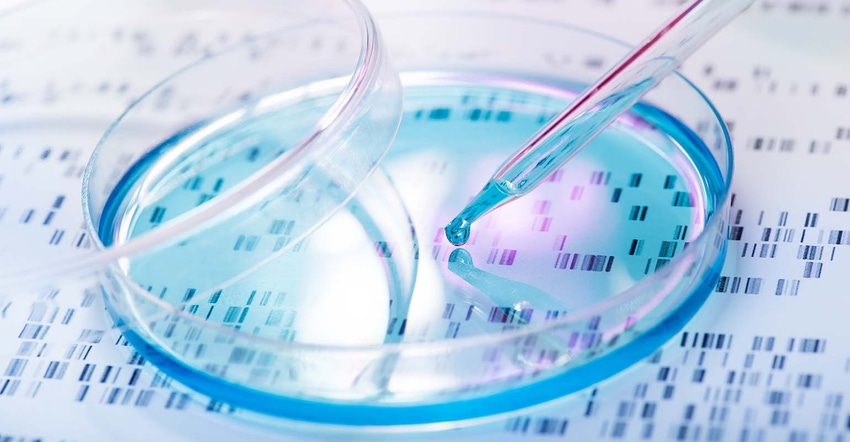Vilsack working with FDA on animal biotechnology
Bipartisan letter also calls on USDA and FDA leadership to find workable regulatory framework.

Despite the signing of a Memorandum of Understanding on animal biotechnology at the end of the Trump administration between the USDA and the Department of Health and Human Services, animal biotechnology approvals remain stalled. Secretary of Agriculture Tom Vilsack says he’s committed to working with the Food and Drug Administration on creating proper jurisdiction of animal biotech oversight, but concerns exist on the originally signed MOU.
Animal biotechnology refers to genetic altering of animals through a range of potential processes, including recombinant DNA techniques and genome editing, to improve certain traits or characteristics of these animals. These practices have the potential to develop resistance and mitigate diseases including zoonotic infections like SARS-CoV-2 and avian influenza, to reduce methane emissions, improve heat tolerance, and much more.
Currently, these technologies are regulated by FDA under its animal drug authority, through a process that has proven prohibitively onerous. To date, only two animals intended for agricultural purposes have ever been approved by the FDA for domestic use, both taking decades for full approval.
The National Pork Producers Council says it supports giving USDA regulatory authority over gene editing in food animals, pointing out that the agency’s Animal and Plant Health Inspection Service already has a review process in place for gene editing in plants, which can serve as a model for livestock. Under a USDA-proposed rule, the agency would have “primary” regulatory jurisdiction of gene-edited animals.
Ahead of a hearing in the House Agriculture Committee on livestock issues, nearly two-thirds of the committee (37 members) signed and sent a letter to Vilsack and FDA Acting Commissioner Janet Woodcock urging timely progress in the reform of regulatory frameworks and animal biotechnology products. Lawmakers cited genetic improvements as a “hallmark of agriculture” and called on USDA Vilsack and Woodcock to make improvements that would modernize the regulatory system for animal genetics and assure timely adoption of biotechnology innovations.
Related: HHS, USDA sign MOU on animal biotechnology
Rep. Vicki Hartzler, R-Mo., asked Vilsack during the hearing when a pig that has been found to be resistant to PRRS could be used by producers. Vilsack responded that he shares her goal of instituting an appropriate regulatory structure to use the tools and innovations available. “There are ways in which we have to work collaboratively with our friends at FDA to make sure our regulatory system is able to respond quickly enough and be able to keep pace with the pace of change,” the secretary told House Ag members.
In questioning from Rep. Jim Baird, R-Ind., who serves as the ranking member of the House Agriculture Committee’s subcommittee on biotechnology, Baird notes that concerns on the cumbersome regulatory process sends the wrong message and tends to stifle innovation.
“Innovation has been the very backbone of agriculture throughout time. In the last several decades, that innovation has begun to look different as the technology has changed, but the goal remains the same –to create the safest and most sustainable, abundant, and stable food supply in the world,” says Baird.
“The unfortunate reality though, is that our regulatory system has not kept up with this technology and has created a near-impossible challenge to get these products to market,” Baird says. “USDA needs to take the lead in developing new, risk and science-based regulatory pathways that encourage agricultural innovation, provide access to valuable new technologies to American livestock producers, and ensure food safety and security for consumers.”
During the hearing, Vilsack said as a department, USDA attempted to reach an agreement with HHS and FDA during the Trump administration with an original MOU signed, however, the then FDA administrator was not supportive of transferring oversight of animal products to USDA.
Related: Animal gene editing turf war battle continues
Vilsack says he’s not sure HHS published the memorandum as there were some concerns on whether HHS had adequate authority to sign the memorandum. Vilsack says they’re now in the process to take a look at the MOU and “determining whether or not there are steps that need to be taken to make sure we have bright lines between what we do and what FDA does.”
Kevin Scott, a soy grower from Valley Springs, South Dakota and American Soybean Association president, welcomed the bipartisan letter.
“With devastating animal diseases at our nation’s doorstep, the need for genetic innovations to protect our flocks and herds has never been greater. Representatives Plaskett and Baird should be commended for leading the House Agriculture Committee in this impressive bipartisan appeal for much-needed biotechnology regulatory modernization to protect our nation’s livestock. We urge our country’s regulators to heed their call,” says Scott.
ASA agrees that the existing regulatory process for review of animals using biotechnology innovations needs to be streamlined for more timely adoption and applauds the legislators’ letter.
About the Author(s)
You May Also Like





